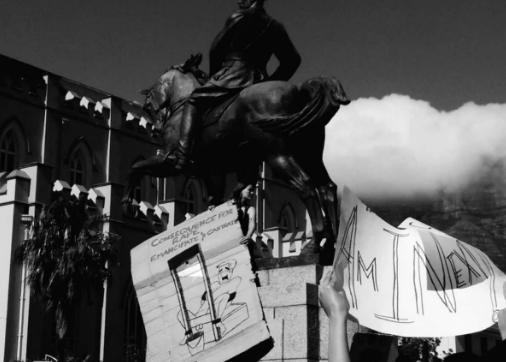Through these photos was born my curiosity about the relationship between bodies, posters and words in spaces of protest. As a graduate student in Global Media and Communications, I started asking about methods of protesting sexual assault. When you think of South Africa Am I next? movement, I realized that the protest poster is a tool that feminists use to transform their own bodies into feminist media. When used in protest, the poster becomes an extension of the body. This highlights the body as a place of transformation. It is a site of potential and power.
Black female pain reading
So what is feminist media? It is rooted in an interdisciplinary understanding of feminism, media, and the spaces in which they overlap. In its simplest form, a feminist medium is material with transmissible qualities that works for liberation. Initially a hashtag, the Am I next? began as a digital tool for awareness and an online space for feminist expression. Understanding the origins of the movement allows us to understand the ability of feminist mediums to evolve in time and space. The viral hashtag is what moved many bodies behind digital devices on the streets of Cape Town. With this in mind, I ask myself:
How do viral hashtags transform when attached to the human body?
Does attaching text to black woman’s body in protest make black woman’s pain easier to read?
And if so, how does this complicate our understanding of what it means to write and read with the body?
Write the body by writing with it
On the African continent, scholars often say that women rioting and women writing have historically been different types of women. Feminist scholar Smimakele Dlakavau (2017) rejects this idea and tells us that women who write and women who riot can occupy the same body. Another feminist scholar, Pumla Mqola (2017), goes even further by suggesting that writing and rioting are the same thing. Holding a written sign at a protest, I believe, is a direct manifestation of this argument. Protest signs can be seen as turning the human body into a permanent media exhibit. In doing so, the text of a poster is humanized by the person holding it. At the same time, the body is transformed into text. These transformative processes are particularly powerful when we view the body as a site of social control. In the context of a manifestation of sexual assault and femicide, claiming control over body shape is a type of resistance that deserves recognition.
Many slogans onAm I next? the protest posters spoke directly to quotes and tweets widely circulated online. This included phrases such as “no means no”, “enough is enough”, “stop killing us” and more.




Add comment